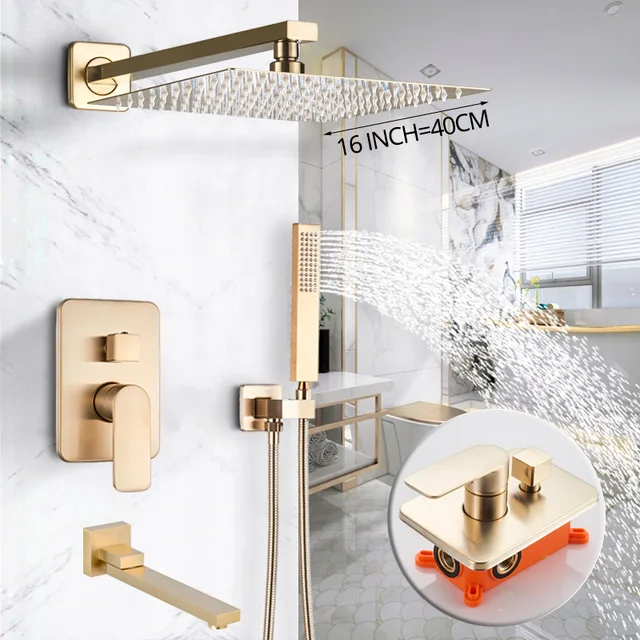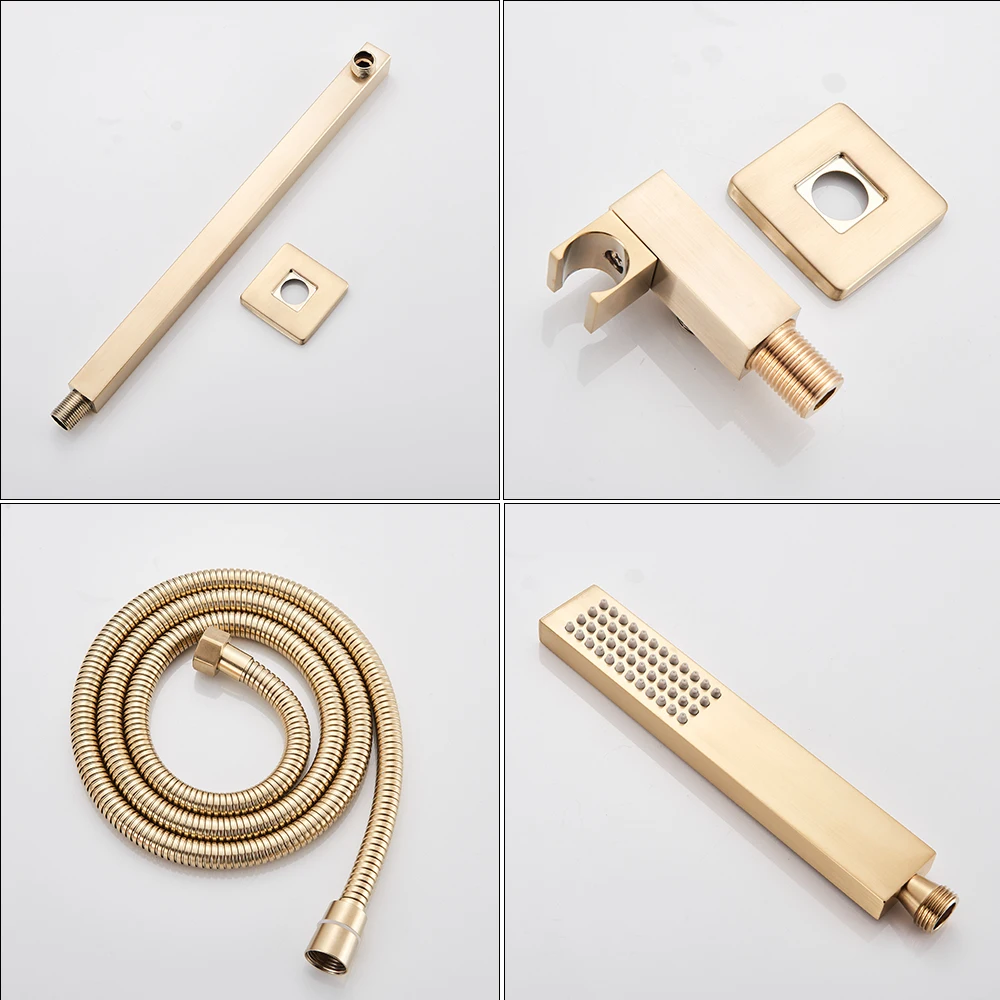Identify the Reason Behind Your Dripping Shower Faucet
A dripping shower faucet can be annoying. More than that, it can lead to higher water bills. To know how to fix shower faucet issues, you first must identify the cause. Common reasons include:

- Worn-out washers or seals: Over time, these can deteriorate and lose their ability to hold back water.
- Corroded valve seat: The part where the faucet and spout meet can corrode, causing leaks.
- Faulty o-ring: A small disc attached to the stem screw may wear out.
- Cartridge problems: Cartridges regulate water flow and temperature; they can malfunction.
- Loose parts: Fittings inside the faucet may loosen with use.
To start, you have to turn off the water supply. Then, take apart the faucet handle. Look for signs of wear or damage on the washers, seals, or cartridge. If you can’t find the issue, the problem might be more complex. At this point, you might want to consider calling a professional. If you are confident in your skills, go ahead with repairs. Remember, the goal is to stop the drip and prevent future water waste.
Tools and Materials Needed for Shower Faucet Repair
Before you can tackle how to fix shower faucet issues, you’ll need the right tools and materials. Equipping yourself properly is the first step to a successful repair. Here’s what you might need:
- Adjustable wrench: Essential for loosening and tightening nuts and bolts.
- Screwdrivers: Both flat-head and Phillips may be necessary to remove faucet handles.
- Allen wrenches: Needed for setscrews that are often found on handle knobs.
- Replacement parts: Depending on the issue, you may need new washers, seals, cartridges, or O-rings.
- Plumber’s tape: This helps seal threaded joints and prevent leaks.
- Plumber’s grease: Used to lubricate O-rings and valve stems for smoother operation.
- Vinegar: Aids in cleaning mineral deposits from faucet parts.
- Clean cloth: For wiping down parts and cleaning up any spills.
- Bucket or pan: Useful for catching any water that may drip out when disassembling the faucet.
These tools and materials will prepare you to address common problems like a dripping faucet, low water pressure, or temperature inconsistencies. Always ensure the main water supply is turned off before starting the repair process to prevent any water damage. By having these items ready, you can confidently begin the repair process and avoid unnecessary interruptions.
Step-by-Step Guide to Replace a Worn Cartridge or Washer
Replacing a worn cartridge or washer can seem daunting, but with the right tools and steps, it is manageable. The process involves several stages:
- Turn Off the Water Supply: Before starting any repair, always cut off water flow to prevent flooding.
- Remove the Faucet Handle: Use a screwdriver or an Allen wrench to take off the handle. Be gentle to avoid damage.
- Access the Cartridge or Washer: Once the handle is off, locate the problematic cartridge or washer. It’s usually held in place by a retaining nut.
- Extract the Cartridge or Washer: With an adjustable wrench, carefully remove the nut and pull out the cartridge or washer.
- Visit a Hardware Store: Take the old parts with you to a hardware store. This ensures you purchase the correct replacements.
- Install New Cartridge or Washer: Put the new parts in place. Use plumber’s grease if necessary to ease installation.
- Reassemble the Faucet: After the new parts are in, reattach the handle and any other removed pieces.
- Test Your Repair: Turn the water supply back on. Check if the drip has stopped and that the faucet operates smoothly.
Remember, if challenges arise or you’re uncertain, it’s okay to reach out to a plumbing professional for help.

How to Increase Water Pressure in Your Shower Faucet
Experiencing low water pressure in your shower can make bathing less satisfying. Often, the solution doesn’t require professional help. Here are straightforward steps to enhance the flow:
- Examine Other Faucets: Check if low pressure is just in the shower or all over your house.
- Clean the Showerhead: Unscrew it and rinse out any debris or scale buildup.
- Inspect the Cartridge: If cleaning doesn’t help, the issue might be with the cartridge that controls water flow.
- Check for Kinks: Ensure that there are no twists or kinks in the flexible hose if you have a hand-held showerhead.
- Inspect the Water Restrictor: Some showerheads come with a restrictor to save water. You may remove it to increase pressure.
- Look for Closed Valves: Sometimes, the shutoff valve in the shower’s access panel might be partially closed. Make sure it’s fully open.
Before you begin, don’t forget to turn off the water supply. Use your adjustable wrench and plumber’s tape when working with fixtures to prevent leaks. If the low pressure persists after these steps, the problem may lie deeper in your plumbing system. At this stage, it could be wise to call a professional plumber.
Troubleshooting Water Temperature Fluctuations
Experiencing sudden changes in water temperature can be startling. It’s crucial to pinpoint the cause to fix it effectively. Below are practical steps to troubleshoot fluctuations in your shower’s water temperature:
- Check the Temperature Limit Stop: Look for this safety feature if your shower gets too hot. Adjust it following your manual’s guide.
- Inspect the Shower Valve: If temperatures swing, this could be the culprit. It might need adjusting or replacing.
- Clean Sediment Off the Cartridge: Debris can cause temperature inconsistencies. Remove the cartridge and clean it well.
- Replace the Thermostatic Shower Cartridge: This part regulates temperature. If it’s failing, a new one may solve the issue.
- Assess Water Heater Settings: Sometimes, the overall water heating system can cause the problem. Check and adjust the settings on your heater.
If these steps do not resolve the temperature swings, the complexity of the issue may require professional help. Ensuring you have tried to troubleshoot can help narrow down the issue. Remember to always be safe. Turn off the water supply before you begin any repairs and consult your manual as needed.
Fixing a Leaking Shower Arm
A leaking shower arm not only disrupts your shower experience but also leads to water loss. Here’s a simple guide on how to fix shower faucet issues, specifically a leaky shower arm:
- Turn Off the Water: Begin by shutting off the water supply to your shower. This will prevent any water from leaking while you work.
- Remove the Shower Arm: Unscrew the current shower arm using an adjustable wrench. Turn it counter-clockwise to loosen.
- Check the Threads: Examine the threads on both the arm and the pipe. Look for signs of damage or corrosion.
- Apply Plumber’s Tape: Get new plumber’s tape and wrap it around the pipe’s threads. This helps create a watertight seal.
- Attach New Shower Arm: Screw the new shower arm in place, clockwise this time. Tighten it, but don’t overdo it to avoid damage.
- Test for Leaks: Turn the water supply on again and watch for any drips. If you spot any, you may need to tighten the arm a bit more.
If these steps don’t stop the leak, there might be a deeper issue. In such cases, it’s wise to consult a professional plumber. Remember to always be cautious when performing repairs and to follow these steps carefully to achieve the best results. With a little patience, you can resolve the problem and enjoy leak-free showers again.
Dealing with Stuck or Hard-to-Turn Shower Handles
Stuck or hard-to-turn shower handles can make shower usage tough. These issues usually come from mineral deposits and corrosion inside the handle. Here’s how to fix them:
- Turn Off the Water: Always start by shutting off the water to the shower. This prevents flooding during repairs.
- Remove the Handle: Take off the handle with a screwdriver or an Allen wrench. Be careful to avoid damage.
- Soak in Vinegar: If the handle is full of deposits, soak it in a vinegar solution. This helps break down the minerals.
- Scrub the Parts: After soaking, use a toothbrush to scrub off the deposits. Rinse the parts well when done.
- Reassemble and Test: Once clean, put the handle back. Turn on the water supply and test the handle.
If your shower handle remains stuck after these steps, you might need new parts. A plumber can help if you’re not sure what to do next. It’s key to act when handles are hard to turn. This can prevent more serious damage later.

When to Call a Professional Plumber
Knowing how to fix shower faucet issues is useful. But sometimes it’s best to call a pro. Here’s when you should:
- When the Problem Persists: If after all repairs, your faucet still drips, a plumber might find a hidden issue.
- Complex Valve Problems: Valves control water flow and temperature. If adjustments and cleaning don’t work, a plumber should look into it.
- When in Doubt: Unsure about a part or a step in the repair process? A professional will have the answers.
- No DIY Confidence: If you’re not confident in your DIY skills, it’s safer and likely more effective to hire a plumber.
- Major Leaks: Small drips are one thing, but big leaks can cause extensive water damage. Get help fast.
- Whole-House Issues: Problems like low water pressure throughout the house need a plumber’s expertise.
- New Installations: Installing a new shower system or making significant changes usually warrants professional help.
Always consider safety and the complexity of the repair. It’s important to know your limits. A pro has the tools and skills to fix things quickly and correctly. Don’t hesitate to call one when you need to.


